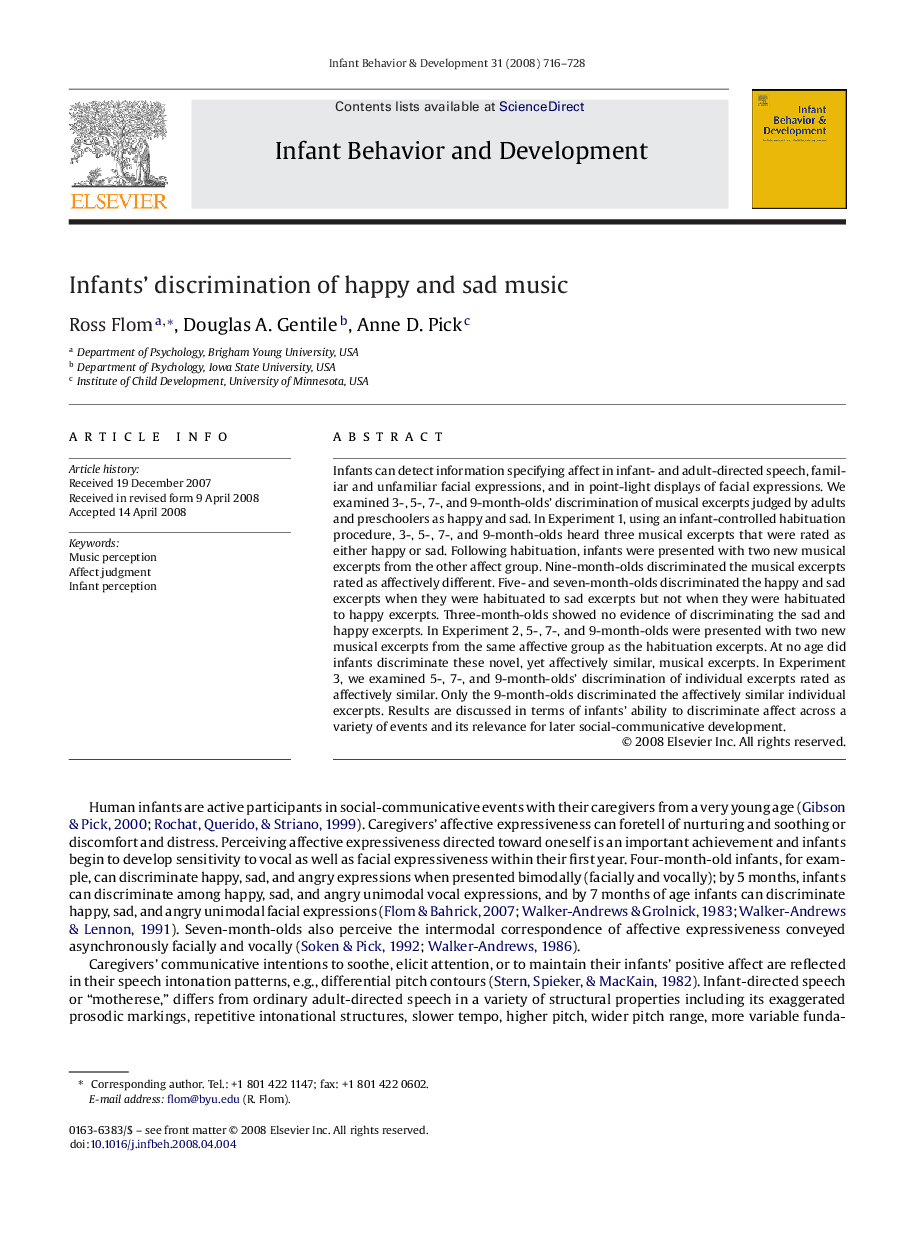| کد مقاله | کد نشریه | سال انتشار | مقاله انگلیسی | نسخه تمام متن |
|---|---|---|---|---|
| 917571 | 919277 | 2008 | 13 صفحه PDF | دانلود رایگان |

Infants can detect information specifying affect in infant- and adult-directed speech, familiar and unfamiliar facial expressions, and in point-light displays of facial expressions. We examined 3-, 5-, 7-, and 9-month-olds’ discrimination of musical excerpts judged by adults and preschoolers as happy and sad. In Experiment 1, using an infant-controlled habituation procedure, 3-, 5-, 7-, and 9-month-olds heard three musical excerpts that were rated as either happy or sad. Following habituation, infants were presented with two new musical excerpts from the other affect group. Nine-month-olds discriminated the musical excerpts rated as affectively different. Five- and seven-month-olds discriminated the happy and sad excerpts when they were habituated to sad excerpts but not when they were habituated to happy excerpts. Three-month-olds showed no evidence of discriminating the sad and happy excerpts. In Experiment 2, 5-, 7-, and 9-month-olds were presented with two new musical excerpts from the same affective group as the habituation excerpts. At no age did infants discriminate these novel, yet affectively similar, musical excerpts. In Experiment 3, we examined 5-, 7-, and 9-month-olds’ discrimination of individual excerpts rated as affectively similar. Only the 9-month-olds discriminated the affectively similar individual excerpts. Results are discussed in terms of infants’ ability to discriminate affect across a variety of events and its relevance for later social-communicative development.
Journal: Infant Behavior and Development - Volume 31, Issue 4, December 2008, Pages 716–728